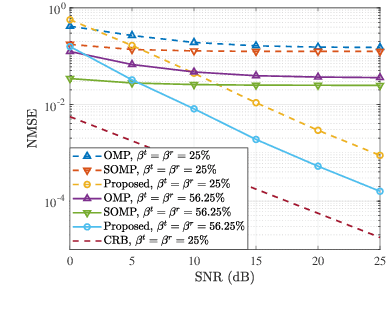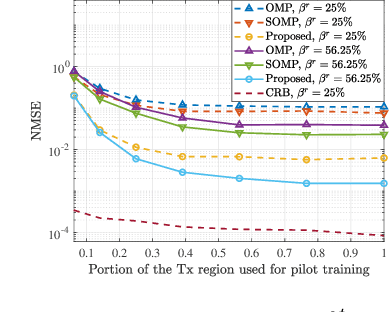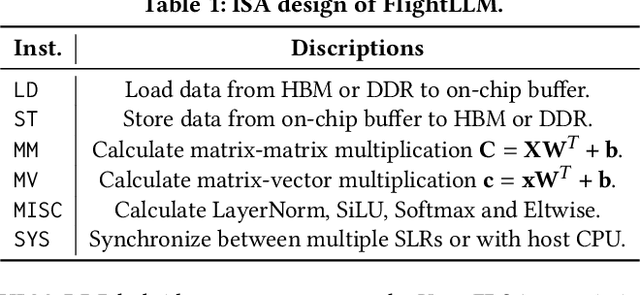Ruoyu Zhang
corresponding author
Terahertz Integrated Sensing and Communication-Empowered UAVs in 6G: A Transceiver Design Perspective
Feb 07, 2025Abstract:Due to their high maneuverability, flexible deployment, and low cost, unmanned aerial vehicles (UAVs) are expected to play a pivotal role in not only communication, but also sensing. Especially by exploiting the ultra-wide bandwidth of terahertz (THz) bands, integrated sensing and communication (ISAC)-empowered UAV has been a promising technology of 6G space-air-ground integrated networks. In this article, we systematically investigate the key techniques and essential obstacles for THz-ISAC-empowered UAV from a transceiver design perspective, with the highlight of its major challenges and key technologies. Specifically, we discuss the THz-ISAC-UAV wireless propagation environment, based on which several channel characteristics for communication and sensing are revealed. We point out the transceiver payload design peculiarities for THz-ISAC-UAV from the perspective of antenna design, radio frequency front-end, and baseband signal processing. To deal with the specificities faced by the payload, we shed light on three key technologies, i.e., hybrid beamforming for ultra-massive MIMO-ISAC, power-efficient THz-ISAC waveform design, as well as communication and sensing channel state information acquisition, and extensively elaborate their concepts and key issues. More importantly, future research directions and associated open problems are presented, which may unleash the full potential of THz-ISAC-UAV for 6G wireless networks.
DSTSA-GCN: Advancing Skeleton-Based Gesture Recognition with Semantic-Aware Spatio-Temporal Topology Modeling
Jan 21, 2025Abstract:Graph convolutional networks (GCNs) have emerged as a powerful tool for skeleton-based action and gesture recognition, thanks to their ability to model spatial and temporal dependencies in skeleton data. However, existing GCN-based methods face critical limitations: (1) they lack effective spatio-temporal topology modeling that captures dynamic variations in skeletal motion, and (2) they struggle to model multiscale structural relationships beyond local joint connectivity. To address these issues, we propose a novel framework called Dynamic Spatial-Temporal Semantic Awareness Graph Convolutional Network (DSTSA-GCN). DSTSA-GCN introduces three key modules: Group Channel-wise Graph Convolution (GC-GC), Group Temporal-wise Graph Convolution (GT-GC), and Multi-Scale Temporal Convolution (MS-TCN). GC-GC and GT-GC operate in parallel to independently model channel-specific and frame-specific correlations, enabling robust topology learning that accounts for temporal variations. Additionally, both modules employ a grouping strategy to adaptively capture multiscale structural relationships. Complementing this, MS-TCN enhances temporal modeling through group-wise temporal convolutions with diverse receptive fields. Extensive experiments demonstrate that DSTSA-GCN significantly improves the topology modeling capabilities of GCNs, achieving state-of-the-art performance on benchmark datasets for gesture and action recognition, including SHREC17 Track, DHG-14\/28, NTU-RGB+D, and NTU-RGB+D-120.
DeepSeek-V3 Technical Report
Dec 27, 2024



Abstract:We present DeepSeek-V3, a strong Mixture-of-Experts (MoE) language model with 671B total parameters with 37B activated for each token. To achieve efficient inference and cost-effective training, DeepSeek-V3 adopts Multi-head Latent Attention (MLA) and DeepSeekMoE architectures, which were thoroughly validated in DeepSeek-V2. Furthermore, DeepSeek-V3 pioneers an auxiliary-loss-free strategy for load balancing and sets a multi-token prediction training objective for stronger performance. We pre-train DeepSeek-V3 on 14.8 trillion diverse and high-quality tokens, followed by Supervised Fine-Tuning and Reinforcement Learning stages to fully harness its capabilities. Comprehensive evaluations reveal that DeepSeek-V3 outperforms other open-source models and achieves performance comparable to leading closed-source models. Despite its excellent performance, DeepSeek-V3 requires only 2.788M H800 GPU hours for its full training. In addition, its training process is remarkably stable. Throughout the entire training process, we did not experience any irrecoverable loss spikes or perform any rollbacks. The model checkpoints are available at https://github.com/deepseek-ai/DeepSeek-V3.
GESH-Net: Graph-Enhanced Spherical Harmonic Convolutional Networks for Cortical Surface Registration
Oct 18, 2024Abstract:Currently, cortical surface registration techniques based on classical methods have been well developed. However, a key issue with classical methods is that for each pair of images to be registered, it is necessary to search for the optimal transformation in the deformation space according to a specific optimization algorithm until the similarity measure function converges, which cannot meet the requirements of real-time and high-precision in medical image registration. Researching cortical surface registration based on deep learning models has become a new direction. But so far, there are still only a few studies on cortical surface image registration based on deep learning. Moreover, although deep learning methods theoretically have stronger representation capabilities, surpassing the most advanced classical methods in registration accuracy and distortion control remains a challenge. Therefore, to address this challenge, this paper constructs a deep learning model to study the technology of cortical surface image registration. The specific work is as follows: (1) An unsupervised cortical surface registration network based on a multi-scale cascaded structure is designed, and a convolution method based on spherical harmonic transformation is introduced to register cortical surface data. This solves the problem of scale-inflexibility of spherical feature transformation and optimizes the multi-scale registration process. (2)By integrating the attention mechanism, a graph-enhenced module is introduced into the registration network, using the graph attention module to help the network learn global features of cortical surface data, enhancing the learning ability of the network. The results show that the graph attention module effectively enhances the network's ability to extract global features, and its registration results have significant advantages over other methods.
DySpec: Faster Speculative Decoding with Dynamic Token Tree Structure
Oct 15, 2024Abstract:While speculative decoding has recently appeared as a promising direction for accelerating the inference of large language models (LLMs), the speedup and scalability are strongly bounded by the token acceptance rate. Prevalent methods usually organize predicted tokens as independent chains or fixed token trees, which fails to generalize to diverse query distributions. In this paper, we propose DySpec, a faster speculative decoding algorithm with a novel dynamic token tree structure. We begin by bridging the draft distribution and acceptance rate from intuitive and empirical clues, and successfully show that the two variables are strongly correlated. Based on this, we employ a greedy strategy to dynamically expand the token tree at run time. Theoretically, we show that our method can achieve optimal results under mild assumptions. Empirically, DySpec yields a higher acceptance rate and speedup than fixed trees. DySpec can drastically improve the throughput and reduce the latency of token generation across various data distribution and model sizes, which significantly outperforms strong competitors, including Specinfer and Sequoia. Under low temperature setting, DySpec can improve the throughput up to 9.1$\times$ and reduce the latency up to 9.4$\times$ on Llama2-70B. Under high temperature setting, DySpec can also improve the throughput up to 6.21$\times$, despite the increasing difficulty of speculating more than one token per step for draft model.
Channel Estimation for Movable-Antenna MIMO Systems Via Tensor Decomposition
Jul 26, 2024


Abstract:In this letter, we investigate the channel estimation problem for MIMO wireless communication systems with movable antennas (MAs) at both the transmitter (Tx) and receiver (Rx). To achieve high channel estimation accuracy with low pilot training overhead, we propose a tensor decomposition-based method for estimating the parameters of multi-path channel components, including their azimuth and elevation angles, as well as complex gain coefficients, thereby reconstructing the wireless channel between any pair of Tx and Rx MA positions in the Tx and Rx regions. First, we introduce a two-stage Tx-Rx successive antenna movement pattern for pilot training, such that the received pilot signals in both stages can be expressed as a third-order tensor. Then, we obtain the factor matrices of the tensor via the canonical polyadic decomposition, and thereby estimate the angle/gain parameters for enabling the channel reconstruction between arbitrary Tx/Rx MA positions. In addition, we analyze the uniqueness condition of the tensor decomposition, which ensures the complete channel reconstruction between the whole Tx and Rx regions based on the channel measurements at only a finite number of Tx/Rx MA positions. Finally, simulation results are presented to evaluate the proposed tensor decomposition-based method as compared to existing methods, in terms of channel estimation accuracy and pilot overhead.
Leveraging Large Language Model as Simulated Patients for Clinical Education
Apr 25, 2024Abstract:Simulated Patients (SPs) play a crucial role in clinical medical education by providing realistic scenarios for student practice. However, the high cost of training and hiring qualified SPs, along with the heavy workload and potential risks they face in consistently portraying actual patients, limit students' access to this type of clinical training. Consequently, the integration of computer program-based simulated patients has emerged as a valuable educational tool in recent years. With the rapid development of Large Language Models (LLMs), their exceptional capabilities in conversational artificial intelligence and role-playing have been demonstrated, making them a feasible option for implementing Virtual Simulated Patient (VSP). In this paper, we present an integrated model-agnostic framework called CureFun that harnesses the potential of LLMs in clinical medical education. This framework facilitates natural conversations between students and simulated patients, evaluates their dialogue, and provides suggestions to enhance students' clinical inquiry skills. Through comprehensive evaluations, our approach demonstrates more authentic and professional SP-scenario dialogue flows compared to other LLM-based chatbots, thus proving its proficiency in simulating patients. Additionally, leveraging CureFun's evaluation ability, we assess several medical LLMs and discuss the possibilities and limitations of using LLMs as virtual doctors from the perspective of their diagnostic abilities.
FlightLLM: Efficient Large Language Model Inference with a Complete Mapping Flow on FPGAs
Jan 09, 2024



Abstract:Transformer-based Large Language Models (LLMs) have made a significant impact on various domains. However, LLMs' efficiency suffers from both heavy computation and memory overheads. Compression techniques like sparsification and quantization are commonly used to mitigate the gap between LLM's computation/memory overheads and hardware capacity. However, existing GPU and transformer-based accelerators cannot efficiently process compressed LLMs, due to the following unresolved challenges: low computational efficiency, underutilized memory bandwidth, and large compilation overheads. This paper proposes FlightLLM, enabling efficient LLMs inference with a complete mapping flow on FPGAs. In FlightLLM, we highlight an innovative solution that the computation and memory overhead of LLMs can be solved by utilizing FPGA-specific resources (e.g., DSP48 and heterogeneous memory hierarchy). We propose a configurable sparse DSP chain to support different sparsity patterns with high computation efficiency. Second, we propose an always-on-chip decode scheme to boost memory bandwidth with mixed-precision support. Finally, to make FlightLLM available for real-world LLMs, we propose a length adaptive compilation method to reduce the compilation overhead. Implemented on the Xilinx Alveo U280 FPGA, FlightLLM achieves 6.0$\times$ higher energy efficiency and 1.8$\times$ better cost efficiency against commercial GPUs (e.g., NVIDIA V100S) on modern LLMs (e.g., LLaMA2-7B) using vLLM and SmoothQuant under the batch size of one. FlightLLM beats NVIDIA A100 GPU with 1.2$\times$ higher throughput using the latest Versal VHK158 FPGA.
Integrated Sensing and Communication with Massive MIMO: A Unified Tensor Approach for Channel and Target Parameter Estimation
Jan 03, 2024Abstract:Benefitting from the vast spatial degrees of freedom, the amalgamation of integrated sensing and communication (ISAC) and massive multiple-input multiple-output (MIMO) is expected to simultaneously improve spectral and energy efficiencies as well as the sensing capability. However, a large number of antennas deployed in massive MIMO-ISAC raises critical challenges in acquiring both accurate channel state information and target parameter information. To overcome these two challenges with a unified framework, we first analyze their underlying system models and then propose a novel tensor-based approach that addresses both the channel estimation and target sensing problems. Specifically, by parameterizing the high-dimensional communication channel exploiting a small number of physical parameters, we associate the channel state information with the sensing parameters of targets in terms of angular, delay, and Doppler dimensions. Then, we propose a shared training pattern adopting the same time-frequency resources such that both the channel estimation and target parameter estimation can be formulated as a canonical polyadic decomposition problem with a similar mathematical expression. On this basis, we first investigate the uniqueness condition of the tensor factorization and the maximum number of resolvable targets by utilizing the specific Vandermonde
LLMaAA: Making Large Language Models as Active Annotators
Oct 31, 2023Abstract:Prevalent supervised learning methods in natural language processing (NLP) are notoriously data-hungry, which demand large amounts of high-quality annotated data. In practice, acquiring such data is a costly endeavor. Recently, the superior few-shot performance of large language models (LLMs) has propelled the development of dataset generation, where the training data are solely synthesized from LLMs. However, such an approach usually suffers from low-quality issues, and requires orders of magnitude more labeled data to achieve satisfactory performance. To fully exploit the potential of LLMs and make use of massive unlabeled data, we propose LLMaAA, which takes LLMs as annotators and puts them into an active learning loop to determine what to annotate efficiently. To learn robustly with pseudo labels, we optimize both the annotation and training processes: (1) we draw k-NN examples from a small demonstration pool as in-context examples, and (2) we adopt the example reweighting technique to assign training samples with learnable weights. Compared with previous approaches, LLMaAA features both efficiency and reliability. We conduct experiments and analysis on two classic NLP tasks, named entity recognition and relation extraction. With LLMaAA, task-specific models trained from LLM-generated labels can outperform the teacher within only hundreds of annotated examples, which is much more cost-effective than other baselines.
 Add to Chrome
Add to Chrome Add to Firefox
Add to Firefox Add to Edge
Add to Edge